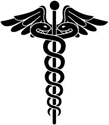Public Relations Is A Powerful Tool To Educate, Engage Patients
March 20, 2014
 As pharmaceutical and biotech companies compete for the hearts and minds of prospective patients, they are re-discovering public relations as a powerful way of doing so. PR, with its unique ability to educate and inform, is a highly effective tool to communicate complex and often challenging information.
As pharmaceutical and biotech companies compete for the hearts and minds of prospective patients, they are re-discovering public relations as a powerful way of doing so. PR, with its unique ability to educate and inform, is a highly effective tool to communicate complex and often challenging information.
This is particularly appropriate in healthcare, where message credibility is so important. Some advantages of PR include that it:
• Creates high-quality content
• Provides a cost-effective way to reach a targeted audience
• Educates potential patients about the disease and its treatments
• Leverages local doctors as key opinion leaders to provide a more local and relatable perspective
• Helps amplify other marketing efforts
Below are some common questions our clients have when incorporating public relations into patient engagement programs. While our examples refer primarily to patient recruitment for clinical research studies, these best practices can be translated to most patient marketing initiatives.
Q: Can I use PR alone as a marketing tactic?
A: Add it to the mix.
PR is far more effective when used as part of an integrated marketing effort. While paid media allows you to control exactly how and where your message is delivered, public relations can deliver your story in a more personal and compelling manner. Both tactics complement one another and enhance response. On a recent cardiovascular events trial, we used a national physician spokesperson on a radio media tour as well as dozens of local study physicians for radio and print interviews. These interviews provided an expanded format to discuss the disease and context of the research that is often difficult to accomplish in a shorter paid ad.
Q:PR is an excellent strategy for raising awareness, but it can also be difficult to measure. How do I know if it’s working?
A: Vanity works.
At the outset of your campaign, create a special “vanity” URL and phone number for your public relations efforts. This will help you directly attribute your results to your PR efforts by allowing you to more easily track the source of those calls and referrals.
Q: How can we ensure our doctors/spokespersons will adhere to the regulatory-approved messaging, and that the reporters will get it right when writing or producing their stories?
A: Anticipate and train!
At the beginning of the program, we create an extensive Q&A document to:
• Anticipate any possible questions
• Maintain consistent messaging
Whether it’s a media interview, a community event, or social conversation online (think blog, tweet or social post), if you’ve done your homework you should have an appropriate response for most issues that come your way.
Engage your spokespeople in message training prior to the campaign launch and again right before every interview. Role play so that physicians are prepared for challenging or off-topic questions.
Whenever possible, request that your PR representative be allowed to listen in on pre-recorded broadcast or print interviews to catch potential issues or provide clarifications. Most reporters want to get the story right and will welcome your input as long as you don’t impede the flow of the interview.
Q: How else can PR reach patients besides media outreach?
A: Advocacy and community outreach.
PR can tap into other resources, such as national advocacy groups or local grassroots organizations. Identifying mutually beneficial goals and exhibiting a sincere, sustained commitment develops credibility and trust with advocacy groups and their membership. Sites in a lupus trial participated in local health fairs and community events for lupus. We affiliated with a national advocacy group for a celiac disease trial, which promoted the research opportunity for members. While many of these are earned opportunities, remember that advocacy groups are not-for-profit and may request a corporate donation to their programming.
When used in conjunction with your other paid and owned media, PR can engage prospective patients in a more personal and local manner. You can develop high-quality content that educates patients about their disease and treatment options they may not have heard about otherwise. In an age where marketing is less of a one-way push and more of a two-way dialogue, public relations is a great way to start the conversation.
By Rob Eiseman
Rob Eiseman is vice president of public relations for Blue Chip Marketing Worldwide.
Courtesy of MediaPost



























